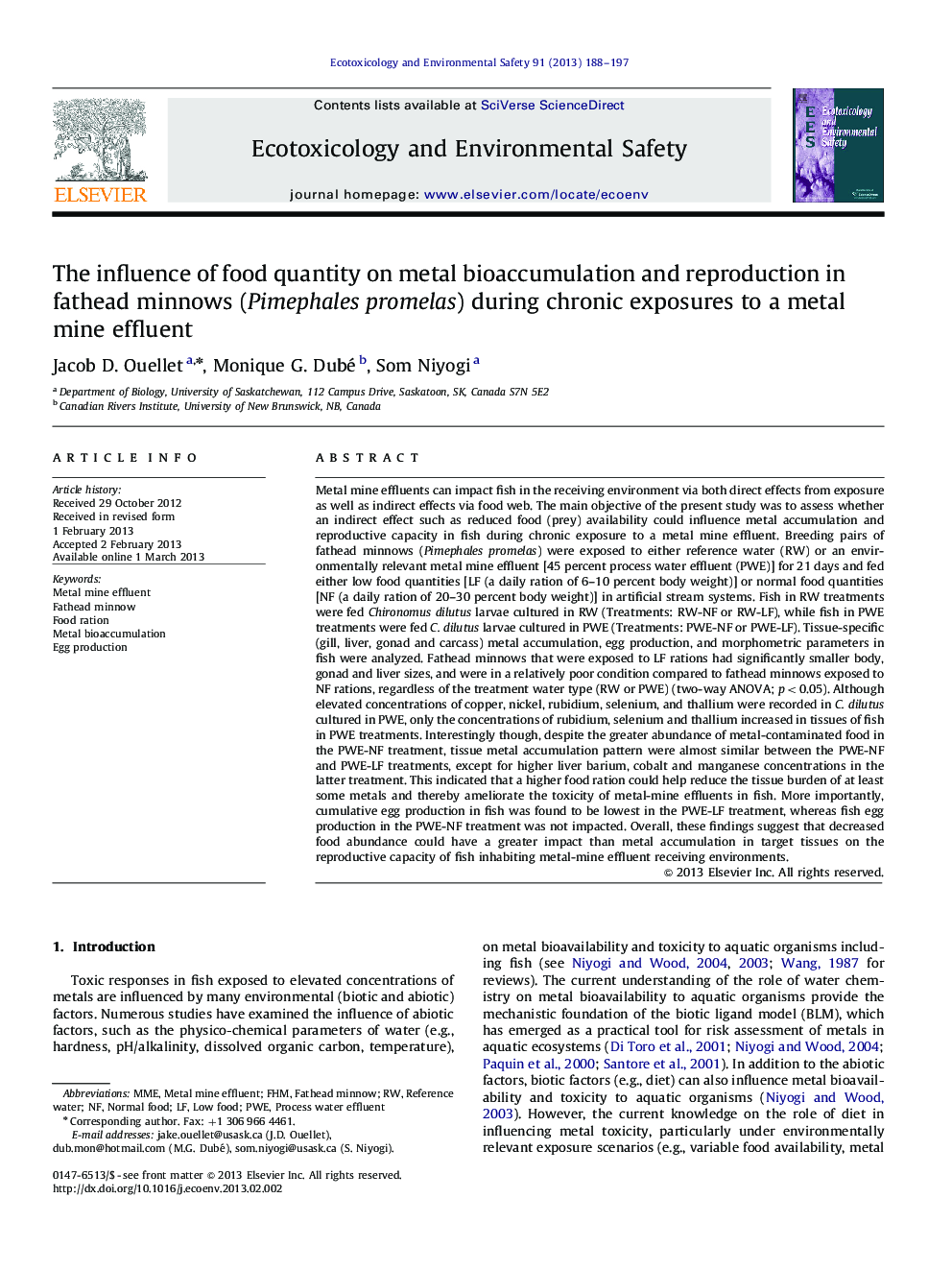| کد مقاله | کد نشریه | سال انتشار | مقاله انگلیسی | نسخه تمام متن |
|---|---|---|---|---|
| 4420530 | 1618972 | 2013 | 10 صفحه PDF | دانلود رایگان |

Metal mine effluents can impact fish in the receiving environment via both direct effects from exposure as well as indirect effects via food web. The main objective of the present study was to assess whether an indirect effect such as reduced food (prey) availability could influence metal accumulation and reproductive capacity in fish during chronic exposure to a metal mine effluent. Breeding pairs of fathead minnows (Pimephales promelas) were exposed to either reference water (RW) or an environmentally relevant metal mine effluent [45 percent process water effluent (PWE)] for 21 days and fed either low food quantities [LF (a daily ration of 6–10 percent body weight)] or normal food quantities [NF (a daily ration of 20–30 percent body weight)] in artificial stream systems. Fish in RW treatments were fed Chironomus dilutus larvae cultured in RW (Treatments: RW-NF or RW-LF), while fish in PWE treatments were fed C. dilutus larvae cultured in PWE (Treatments: PWE-NF or PWE-LF). Tissue-specific (gill, liver, gonad and carcass) metal accumulation, egg production, and morphometric parameters in fish were analyzed. Fathead minnows that were exposed to LF rations had significantly smaller body, gonad and liver sizes, and were in a relatively poor condition compared to fathead minnows exposed to NF rations, regardless of the treatment water type (RW or PWE) (two-way ANOVA; p<0.05). Although elevated concentrations of copper, nickel, rubidium, selenium, and thallium were recorded in C. dilutus cultured in PWE, only the concentrations of rubidium, selenium and thallium increased in tissues of fish in PWE treatments. Interestingly though, despite the greater abundance of metal-contaminated food in the PWE-NF treatment, tissue metal accumulation pattern were almost similar between the PWE-NF and PWE-LF treatments, except for higher liver barium, cobalt and manganese concentrations in the latter treatment. This indicated that a higher food ration could help reduce the tissue burden of at least some metals and thereby ameliorate the toxicity of metal-mine effluents in fish. More importantly, cumulative egg production in fish was found to be lowest in the PWE-LF treatment, whereas fish egg production in the PWE-NF treatment was not impacted. Overall, these findings suggest that decreased food abundance could have a greater impact than metal accumulation in target tissues on the reproductive capacity of fish inhabiting metal-mine effluent receiving environments.
► We examine the role of food ration size on metal accumulation and fish fecundity.
► Food ration size explains tissue specific metal concentrations in fish.
► Greater dietary metal availability does not increase tissue metal concentrations.
► Greater food availability promotes greater egg production in fathead minnows.
► We show that indirect effects from food availability influence fish reproduction.
Journal: Ecotoxicology and Environmental Safety - Volume 91, 1 May 2013, Pages 188–197